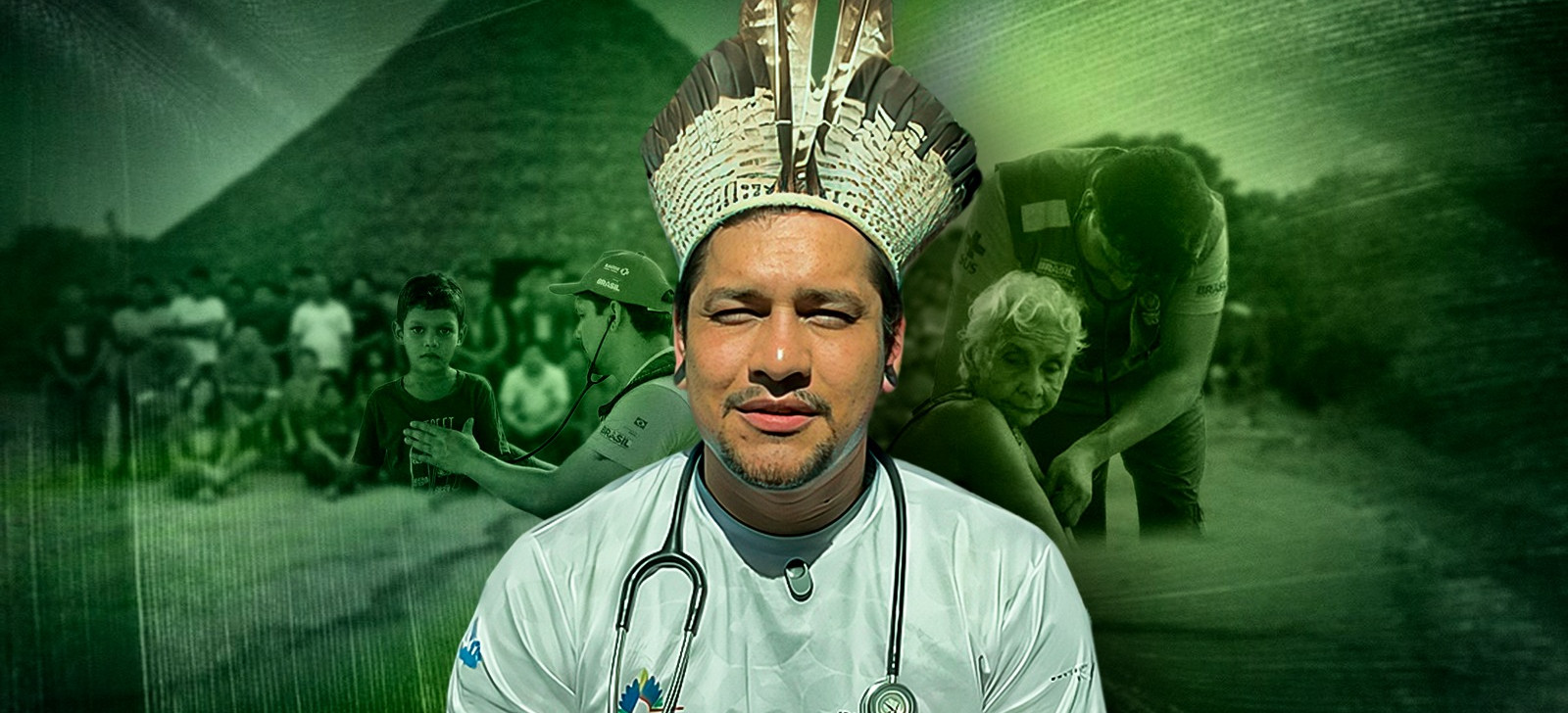Indigenous doctor shares his routine of caring for peoples of the Amazon
02 de September de 2025

By Marcela Leiros – From Cenarium
MANAUS (AM) – A specialist in medical care for Indigenous Peoples and Human Rights, Idjarrury Sompré, of the Kanhgág ethnicity, told CENARIUM that moments like the one recorded in a video that went viral on social media this week give meaning to his life, as an Indigenous person caring for Indigenous people. The footage of a medical appointment in the Zo’é territory, in Óbidos (PA), reached more than two million views on Instagram.
The images show the assistance of an Indigenous patient. Lying in a hammock, he has an IV in his arm and the serum is hung on a stick, a little higher than the patient’s height. The Indigenous man is carried through the forest in the hammock, held by two people. “The moment is moving. As an Indigenous person caring for Indigenous people, for me, these are moments that give meaning to my life,” he declared.
Speaking to the report, Idjarrury Sompré also detailed how rescues are carried out. “These rescues happen when they are communicated via radio. The team then leaves the base, meeting the patient who is being transported by them [the Indigenous]. We meet, evaluate, and administer the necessary medications. After that, we go together back to the base, where there is a stabilization room and more support equipment for more serious cases,” he explained.
The technique is common among Indigenous communities as it makes it easier to transport debilitated patients through the forest, with greater mobility and speed over long distances between villages and the health base.
The doctor emphasizes that the practice is not mere improvisation without technique or care. “All adaptations take into account the culture, the autonomy of decision of the Indigenous people regarding the adopted technique, the health of the patient, and most importantly, the correct technique so that it is not careless improvisation that causes more harm than health care,” he stated.
Activism
Doctor and activist for Indigenous health, Idjarrury Sompré is the founder of the Society of Indigenous Doctors of Brazil (Simb) and is part of “Forest Rescuers,” an organization that teaches how to save lives in the Amazon rainforest.
The group, he explains, is a cooperation of knowledge. “We learn together, for example, in the first aid training module, which deals with transporting victims, to adapt transport with the hammock (Indigenous knowledge) and the cases in which hammocks can or cannot be used, such as suspected spinal trauma or pelvic fracture, which need to be stabilized on a rigid flat board (Western knowledge),” he explained.
The project was created to face a common challenge in remote, riverside, and Indigenous areas of the Amazon: medical emergency care that can take many hours or even days to arrive. The goal is to train forest residents in simple and practical techniques for initial care, focusing on the Amazonian reality.
Among the shared knowledge are producing stretchers with forest wood; immobilizations with available materials; rescuing drowning victims; and medical care for snakebites. More than 200 people who work and live in forest areas have already been trained in the project.

